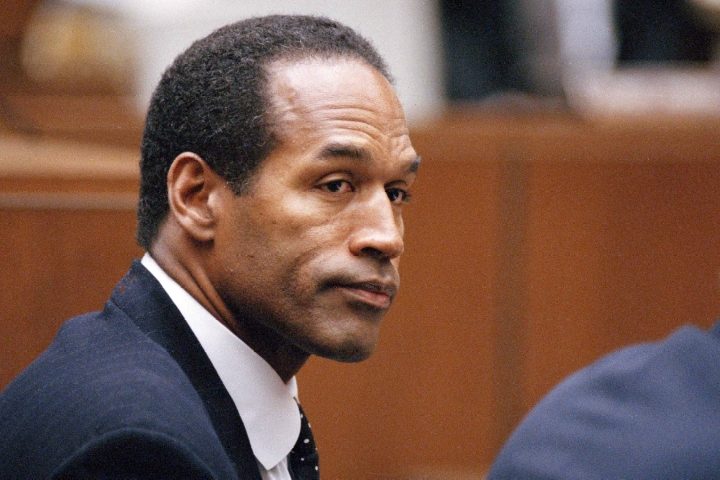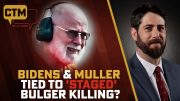
O.J. Simpson’s prostate-cancer death occasions recalling not his remarkable football career, but instead his acquittal in the murder of his wife, Nicole Brown, and her friend, Ron Goldman, on June 12, 1994.
The evidence showed that Simpson was guilty; the jury nullified what should have been an obvious verdict, as one of the jurors admitted years later. And so Simpson lived the rest of his life in relative peace, although a jury found him responsible for the murders in a civil wrongful-death trial, and he landed in prison for nine years after a sports memorabilia heist in 2007.
The judge, Lance Ito, and prosecutors Marica Clark and Chris Darden, permitted Simpson’s attorneys, led by the late Johnnie Cochran, to racialize the case, and suggest that Simpson was the victim of a racist conspiracy of white cops who planted his blood at the scene of the crime.
It was preposterous, but it worked.
After the federal criminal retrial and conviction of the white Los Angeles cops who were acquitted in state court of beating black career criminal Rodney King, the jury’s acquittal of Simpson was a second major step in exploiting race during criminal trials.
The Murders
The night of the murders, after Brown and Simpson attended a recital for their daughter, Brown ate at Mezzaluna restaurant with her children and mother and returned home after ice cream at a Ben & Jerry’s. Her mother left a pair of glasses at the restaurant, which the manager gave to Goldman to return when his shift ended at 9:50 p.m.
Sometime between then and midnight, a neighbor walking his dog found Brown’s Akita barking, its legs soaked in blood. The dog followed the man, and when he tried to return it, it balked. He left the dog with a couple who offered to dogsit until morning, but they decided to return it that night and found Goldman. Police found Brown when they landed at the bloody scene.
The autopsy reports and crime scene photos (warning: graphic photos) described and depicted a slaughter. Brown’s throat was cut nearly ear to ear. Her carotid arteries were severed, and her jugular veins were cut. So deep was the wound that it “transects the distal one-third of the epiglottis, the hypo-pharynx, and passes into the body of the 3rd cervical vertebra where it transversely oriented 3/4 inch incised wound is seen in the bone, extending it for a depth of 1/4 inch into the bone,” the autopsy report said.
Simpson almost decapitated his former wife.
Goldman’s autopsy described a gaping wound in his neck and a severed left jugular vein and defensive wounds on his hands.
Police found Simpson’s blood at the scene, and detectives found Brown’s and Goldman’s blood in O.J. Simpson’s Ford Bronco. Cops also recovered a gun, disguise, passport, and $8,000.
The case went to trial on November 9, 1994 and ended on October 3, 1995 with Simpson’s acquittal.
Bugliosi: Miscarriage of Justice, Jury Nullification
The late Vincent Bugliosi, famed prosecutor of Charles Manson and his murder “family,” blamed Simpsons’ acquittal on prosecutorial incompetence in his book Outrage: The Five Reasons Why O.J. Simpson Got Away With Murder, published in 1996.
But just after the acquittal, he appeared on Geraldo Rivera’s CNBC program to explain in a few short minutes why Simpson was obviously guilty, how the judge and prosecutors mishandled the case, and how defense attorneys used the claim of racism to get a mostly black jury to acquit.
“I’ve never seen a more obvious case of guilt.… When you find someone’s blood, when someone’s blood is at the murder scene, that’s really the end of the ballgame,” Bugliosi told Rivera. But Simpson didn’t just leave his blood at the murder scene, he continued:
The victims’ blood was found inside his car and home, and under these circumstances there’s just no possible way for him to be innocent, not in the world in which we live, only in a fantasy world. Yet this jury … apparently gave no weight to the tremendous amount of incriminating evidence, and bought into this preposterous defense argument that Simpson was being framed by the LAPD because he was black.
Bugliosi added that the jury did no favors for the black community, given that Simpson had treated it with disdain after he became famous.
Bugliosi also blamed “Ito completely for allowing race to be a big issue in this trial. He never should have … allowed the defense to ask [Detective Mark] Fuhrman whether he had ever used a racial slur in the last 10 years.”
Fuhrman’s using such a word was irrelevant, Bugliosi said, because even if he did, it wouldn’t mean he framed a black man for murder. It’s a “non sequitur and a broad jump of Olympian proportions to conclude that just because someone’s a racist they go around framing innocent people of murder.”
Permitting the jury to hear that evidence was extremely prejudicial:
Every single day thousands of police officers, white police officers, arrest and investigate black suspects. Does anyone really believe when those thousands upon thousands of cases come to court it’s perfectly proper to ask every single one of those white police officers if he ever used a racial slur, and if he denies it, and there’s some evidence that he did, have a separate satellite trial on that issue? Judge Ito was way off base.
As for the trial, it should not have been tried in downtown Los Angeles, but instead in Santa Monica where the murders occurred.
As well, prosecutors did not introduce evidence such as the gun, cash, disguise, and passport found in Simpson’s Bronco. Nor did they enter into evidence Simpson’s suicide note that “reeks of guilt,” and “they never introduced that extremely incriminating statement that Simpson made to the police the morning after the murders.”
That statement involved how Simpson badly cut his left middle finger.
After detectives told Simpson they found his blood in his car and his driveway, Simpson told them he didn’t know how he cut his left middle finger:
That statement all by itself is extremely powerful circumstantial evidence of guilt.… What is the likelihood that Simpson innocently cut himself very, very badly … around the very same time that his former wife and male companion are brutally murdered?”
Prosecutor Marcia Clark, he said, didn’t spend enough time debunking the conspiracy theory that police planted Simpson’s blood at the scene to frame him, particularly given his fame.
Bugliosi also explained the penalty for framing someone for a capital crime: death. And he said no one with any sense would believe that the detectives at the scene who didn’t know Fuhrman would conspire with him to frame Simpson for no reason.
Prosecutors didn’t divulge a crucial fact. Fuhrman answered a call at the Simpson’s after O.J. beat up Nicole, yet didn’t arrest him or even file a police report. As well, Bugliosi explained in his two-part, 7.5-hour video on the trial, Fuhrman was the lead detective in a murder case with a black suspect and white victim. When his investigation revealed that the suspect was innocent, he told prosecutors and they dropped the case. Both facts would have showed that Fuhrman, whatever his racial views, wouldn’t have tried to frame Simpson.
Worse still, prosecutor Chris Darden “unbelievably told this jury no one wants to hurt” Simpson, Bugliosi said:
In effect he’s telling this jury that everyone outside that courtroom black and white are hoping for a not guilty verdict. Then he takes it even further and he tells the jury on this issue of whether he’s guilty or not guilty, I’d hate to be in your shoes.
That means Darden told the jury “it’s almost a reasonable doubt case.”
Instead, he should have told the jury the case was open and shut, and that evidence overwhelmingly showed that Simpson was guilty.
Even with a majority black jury — 10 women, nine blacks, two whites, and one Hispanic — Bugliosi said, he could have convicted Simpson.
Nullification
Despite Bugliosi’s manifest talents — 105 convictions in 106 cases, including 21 murder convictions — he might have been wrong.
In 2016, a year after Bugliosi died, juror Carrie Bess admitted that 90 percent of the jurors knew Simpson was guilty.
Speaking for ESPN’s O.J.: Made in America, Bess answered a straightforward question about the widespread belief that the acquittal was revenge for the acquittal of the LAPD officers who beat up King — despite their almost immediate conviction in federal court in 1993.
“Do you think there are members of the jury that voted to acquit OJ because of Rodney King?” Bess was asked.
“Yes,” she replied.
And “90 percent of them” felt the same way, she said.
“Did you feel that way?” the interviewer asked.
“Yes,” Bess replied again.
“That was payback,” the interviewer said.
“Uh-huh,” replied Bess.
“Do you think that’s right?” the interviewer asked.
Bess tossed up her hand as if to say, “Yep, that’s the way it goes.”
Bugliosi was right about one thing. The acquittal of O.J. Simpson was one of “darkest days for American justice.”
H/T: The Wrap



